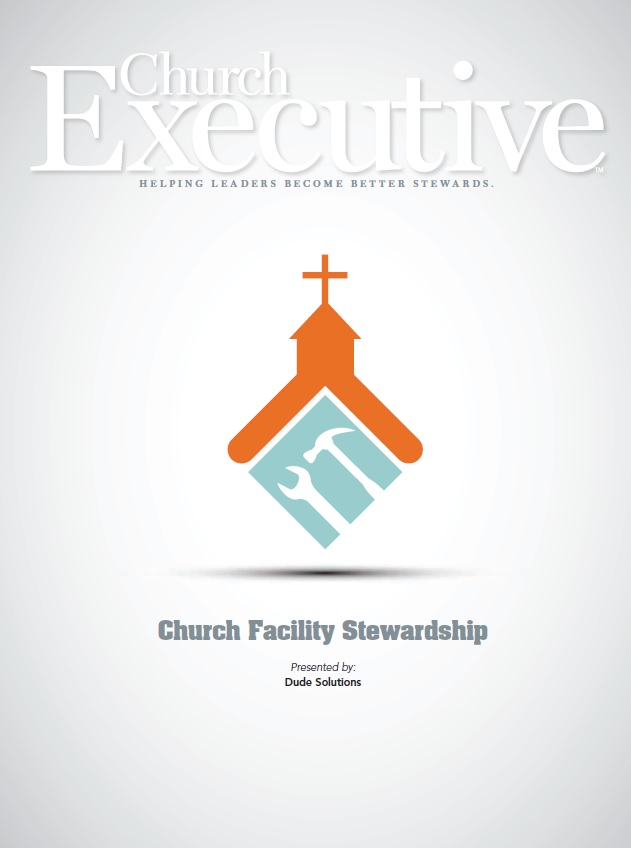
By Donovan Loomis
 Recently, I was talking with a facilities director who was looking for a way to show his employees how valuable they are to the church. This surprised me, as I felt like most folks in this department already understand why what they do is important (even though others might not see all the moving parts).
Recently, I was talking with a facilities director who was looking for a way to show his employees how valuable they are to the church. This surprised me, as I felt like most folks in this department already understand why what they do is important (even though others might not see all the moving parts).
As we continued to talk, I realized that the challenge started with his leadership group and their inability to understand the value of his team’s work. This perception ultimately rolled down to his team and began to influence their outlook on their own jobs.
I talk to a lot of people whose leadership teams don’t fully understand the importance of facilities and how they relate to the church’s mission. This prompted me to pinpoint three of the areas facilities have a direct impact on the church’s mission:
#1: Financially
Every church has a budget for “missions.” The other part of the budget that most don’t attribute to missions is the facilities budget. It has a huge impact on your ability to disciple in your community today — and how you steward your facilities today will have an impact on how much you can contribute to missions down the road.
Since facilities is one of the largest pieces of a budget, it is often perceived as an area that money can be pulled from if giving is down or the budget is tight. However, there is a price to pay if you simply cut back on preventive maintenance.
Deferred maintenance will not take care of itself. In fact, facilities without preventive maintenance will deteriorate about 2% to 4% per year, as opposed to the 1% to 2% with preventive maintenance. You can either pay now, or pay later.
When you defer maintenance, you are borrowing from your future funds at a high interest rate.
There are ways to save, but you must track what you’re doing and know where resources are spent so you are able to determine where you can cut back based on where resources have been allocated in the past.

And it doesn’t stop at preventive maintenance. How much time does your team spend setting up for the events taking place throughout the week? How much does that equal in labor costs? If you charge for those events, is the fee covering those costs? If you are not charging, do you need to consider adding a small fee to cover costs?
I frequently meet folks who tell me their facilities team only does event setup, and everything else is contracted out. If this is the case, are your facilities really getting the attention needed to maximize their useful life?
Speaking of contractors, how do you know when it makes sense to bring that work internally? When you boil it down, do you know where you’re spending your limited resources? And, do you have the information to back up how they’re allocated — or, are you going off a gut feeling? Would you manage your personal budget off a gut feeling?
#2: First impressions
Have you ever been to someone’s home and noticed a messy area or something in need of repair and thought it was strange they wouldn’t clean it before having guests? This likely accumulated so gradually over a period of time that they never consciously noticed it. When you look at something with a fresh set of eyes, you will almost certainly notice things that the person frequently seeing it doesn’t notice or has become accustomed to.
It’s critical to develop detailed checklists outlining what to look for during walkthroughs of your facility to avoid complacency. Your first-time guests will almost certainly notice the worn carpet, cracked tiles, potholes in the parking lot, etc.
It’s critical to be intentional about the story your facilities tell your community and visitors.
#3: Launching pad
At the end of every service at my church, our pastor dismisses us with the phrase, “You are sent.” This is the purpose for every member of our church (and probably yours, as well).
While most of us would agree that the physical building is not “the church,” it is the launching pad for everything we do. If we don’t have a building, we don’t have a place to meet and worship. We are “sent” to make disciples, whether in the form of mission work overseas, or right here in the communities where we live.
If your church is like most, the facilities are used almost every day of the week for church-related functions, and maybe even open for community use. Whatever the event, every function is allowed to be held there for one specific reason: to point people to salvation.
Next time you’re working through a tight budget and something has to be cut, think about the criticality of healthy facilities and what the long-term effects will be on the three areas listed above. Is cutting the budget or reallocating resources really the answer?
Without tracking to get the right information, it’s virtually impossible to make responsible decisions.
Donovan Loomis has more than four years of experience in church facility management and serves as Dude Solutions’ [ https://www.dudesolutions.com ] Industry Specialist, focusing solely on places of worship. He graduated with a BS degree in 2012 from East Carolina University.



